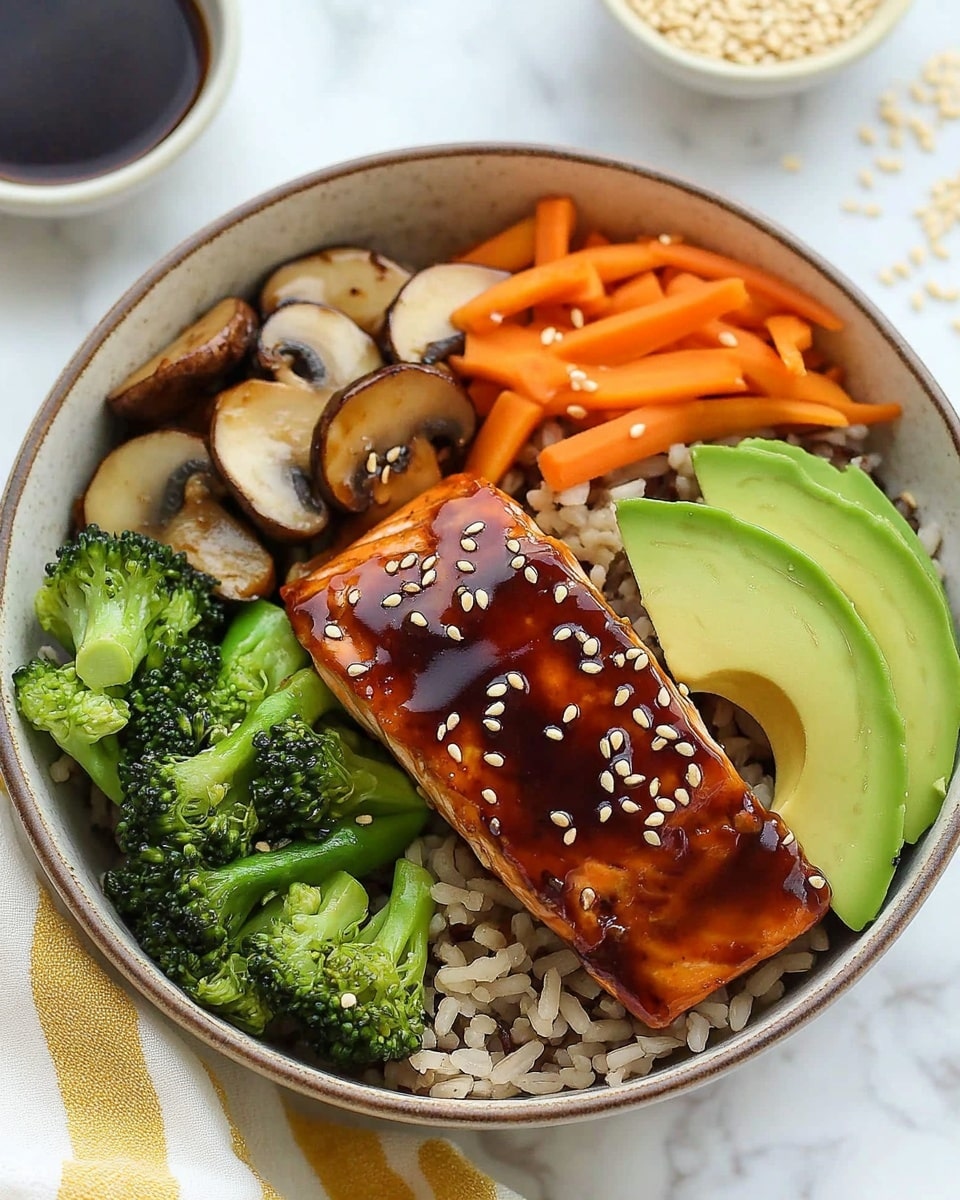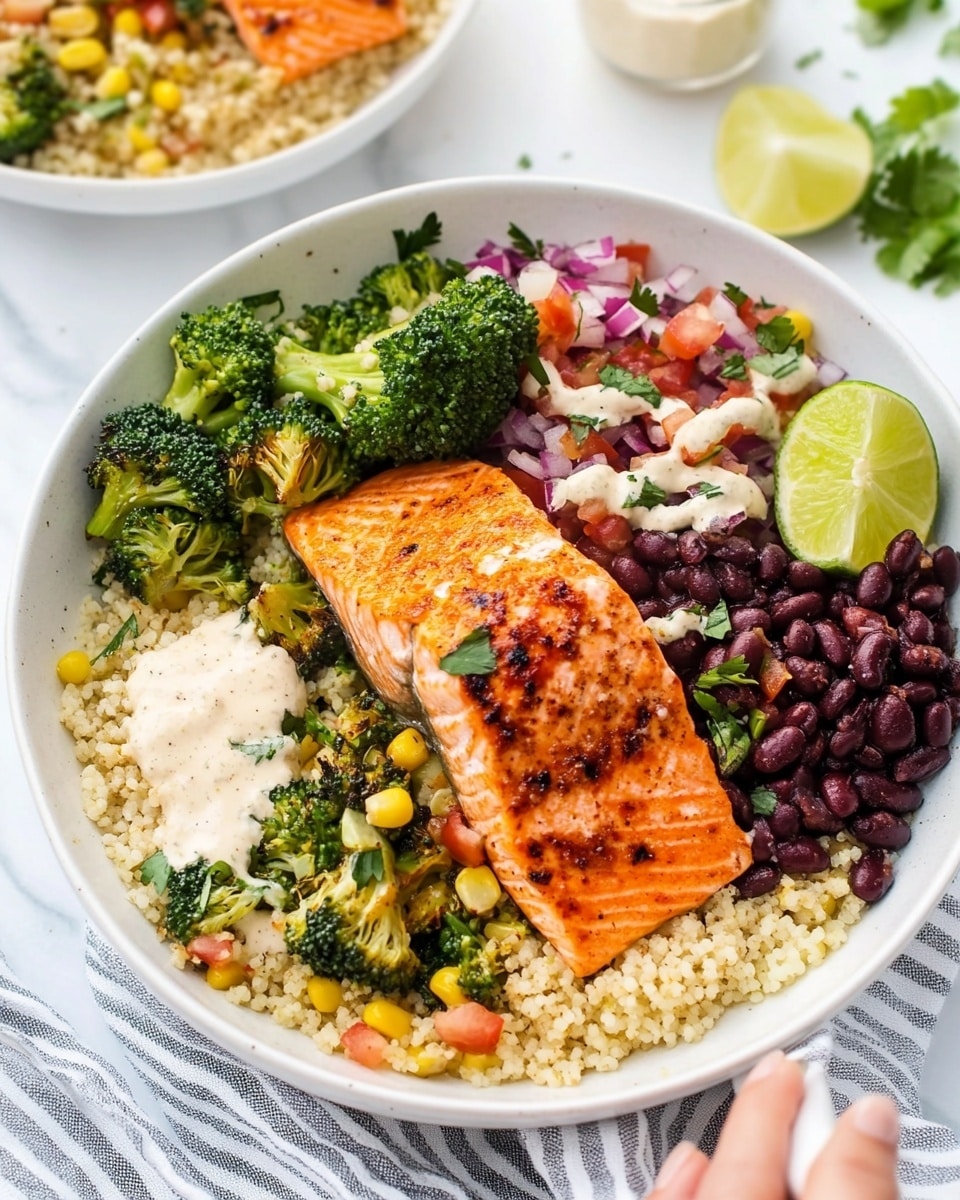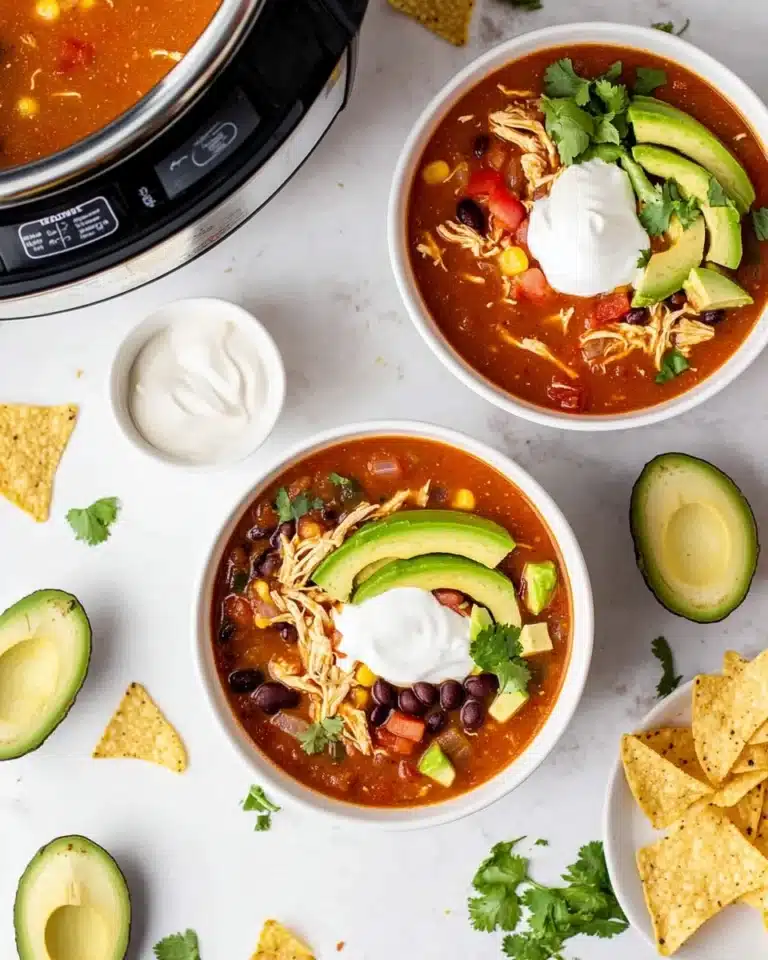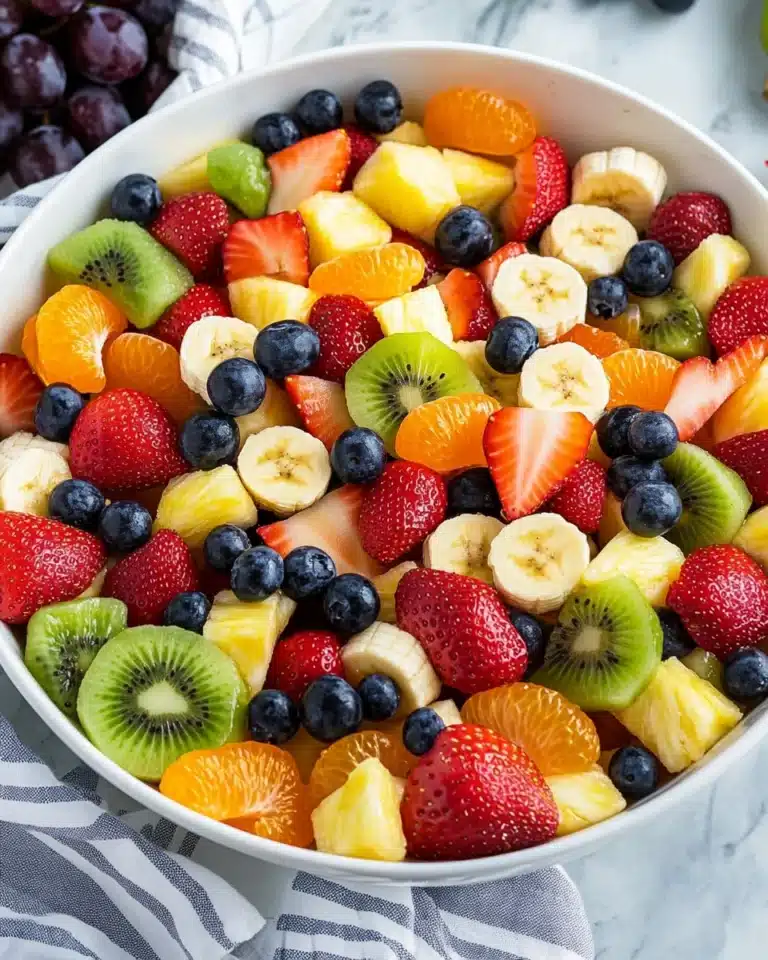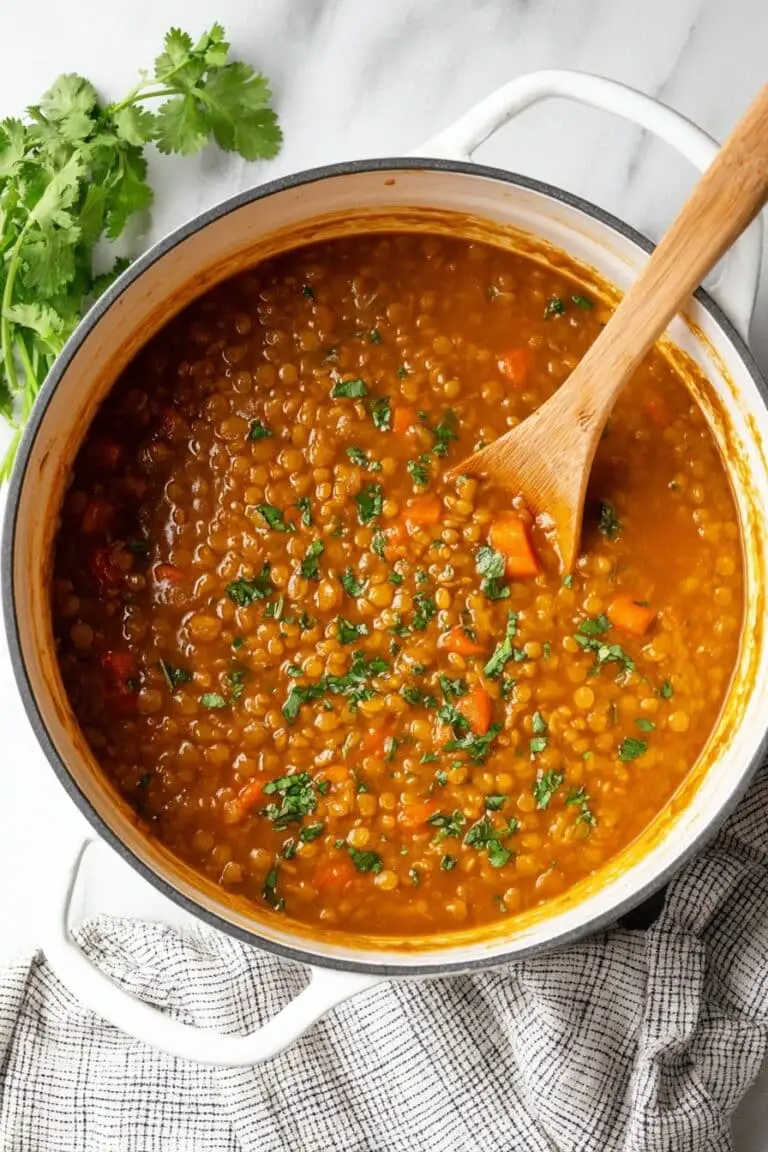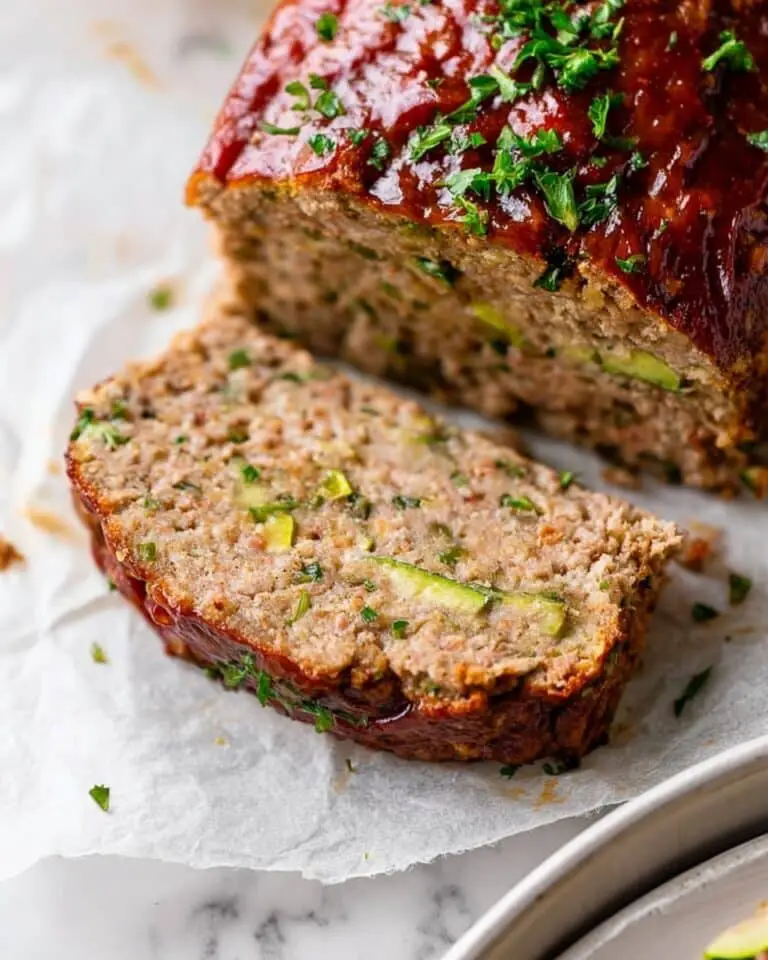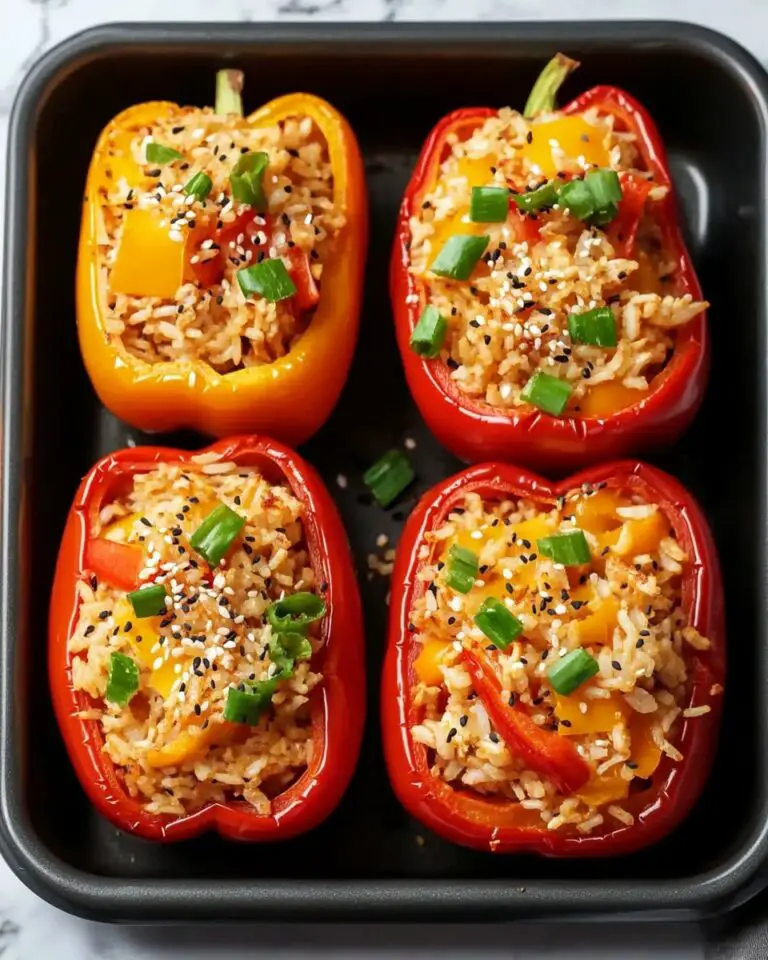There’s something really satisfying about a Teriyaki Salmon Bowl with Veggies and Avocado Recipe that feels both wholesome and indulgent at the same time. I love this bowl because it combines perfectly cooked salmon glazed in savory-sweet teriyaki sauce, fresh steamed veggies, creamy avocado, and fluffy rice all in one vibrant, colorful dish. It’s a meal that’s as beautiful as it is delicious, and it works wonderfully as a quick weekday dinner or a weekend lunch that makes you feel like you went out to a restaurant.
When I first tried this Teriyaki Salmon Bowl with Veggies and Avocado Recipe, I was hooked on how effortless it is to customize based on what’s in your fridge—plus how it hits every craving for a balanced meal. You’ll find that the variety of textures, from the tender flaky salmon to the crisp-tender snow peas and broccoli, paired with creamy avocado slices, really elevate the dish. Plus, with a bit of homemade or store-bought teriyaki sauce, you’re just minutes away from a gourmet-feeling meal.
Why You’ll Love This Recipe
- Flavor Explosion: The teriyaki glaze gives the salmon a perfect balance of sweet and savory that keeps you coming back for bites.
- Healthy and Balanced: You’re getting protein, healthy fats from avocado, fiber-packed veggies, and wholesome grains all in one bowl.
- Simple and Quick: Most of the time is hands-off with marinating and baking, so it’s perfect for busy nights.
- Customizable to Your Taste: Swap veggies or rice types easily based on what you love or have on hand.
Ingredients You’ll Need
Each ingredient in this Teriyaki Salmon Bowl with Veggies and Avocado Recipe plays a key role in building layers of flavor and texture. I always recommend choosing fresh salmon and vibrant veggies to make the dish shine, and if you’re using rice, jasmine or wild rice add a fragrant touch that pairs beautifully with teriyaki sauce.
- Salmon filets: Atlantic or sockeye salmon are great options—sockeye cooks faster and has a stronger flavor, while Atlantic is a bit milder and buttery.
- Brown jasmine rice or quinoa: These grains add a nutty, fluffy base; jasmine rice brings fragrance, while quinoa offers extra protein and texture.
- Olive or avocado oil: Use a neutral oil to steam the veggies without overpowering the fresh flavors.
- Water: Just a small splash to help create steam and soften the veggies nicely.
- Snow peas: Crisp and subtly sweet, they add wonderful crunch and color.
- Broccoli or cauliflower florets: Either veggie works; broccoli gives that grassy bite while cauliflower adds a mild earthiness.
- Sliced mushrooms: They soak up the teriyaki flavors and add an umami depth.
- Sliced carrots: For a little natural sweetness and bright orange color.
- Avocado: Ripe and sliced thin, the creamy texture is essential to balance the savory salmon and crunchy veggies.
- Teriyaki sauce: Makes everything come together with that signature sweet and salty glaze.
- Red pepper flakes (optional): For a touch of heat that wakes up the flavors if you like a little kick.
Variations
I love playing around with this Teriyaki Salmon Bowl with Veggies and Avocado Recipe based on what’s in season or what my family prefers. You can easily tweak veggies or protein to suit your tastes, making it a versatile dish you’ll want to revisit again and again.
- Vegetarian Variation: I swap salmon for marinated and roasted tofu or tempeh, which soaks up the teriyaki sauce beautifully.
- Gluten-Free Twist: Make sure your teriyaki sauce is gluten-free, and switch to quinoa or cauliflower rice for a low-carb option.
- Spicy Kick: Adding a drizzle of sriracha or sprinkling extra red pepper flakes really amps up the flavor if you like some heat.
- Seasonal Veggies: Swapping in asparagus, green beans, or bell peppers keeps it fresh throughout the year.
How to Make Teriyaki Salmon Bowl with Veggies and Avocado Recipe
Step 1: Marinate the Salmon
Start by placing your salmon filets in a large bowl or a zip-top bag and pour in about 1 cup of teriyaki sauce to marinate. I like to let it sit for at least 20 minutes to absorb the flavors, but if you have more time, 2-4 hours in the fridge really deepens the taste. Just keep it covered and cold, and remember, don’t marinate too long or the sauce can start breaking down the fish texture.
Step 2: Bake the Salmon
Preheat your oven to 400°F (200°C) and line a baking sheet with parchment paper to prevent sticking. Lay the salmon filets skin-side down if your fish has skin—it helps keep them moist and makes cleaning easier. Bake for about 12-15 minutes; sockeye generally cooks a little faster because it’s thinner. When the fish flakes easily with a fork and reaches an internal temp of 145°F, you’re almost there!
For a beautiful caramelized finish, turn on the broiler for 1-2 minutes at the end, watching closely so it doesn’t burn. This extra step gives you that glossy, slightly crisp top that just makes the dish look restaurant-worthy.
Step 3: Steam the Veggies
While the salmon bakes, heat your choice of olive or avocado oil in a large pan over medium heat. Toss in the snow peas, broccoli or cauliflower florets, sliced mushrooms, and carrots with ¼ cup of water. Cover and let the veggies steam for about 6 minutes until they’re tender but still have some snap. Drain any excess water to keep the bowl from getting soggy.
Step 4: Warm the Rice and Assemble
Heat your cooked brown jasmine rice, wild rice, or quinoa until hot. Then, it’s all about layering: start with ½ cup of rice, top with a quarter of your steamed veggies, add one salmon filet, and finish with creamy slices of avocado. Drizzle extra teriyaki sauce on top, sprinkle with a pinch of red pepper flakes if you like a little heat, and you’re ready to dig in!
Pro Tips for Making Teriyaki Salmon Bowl with Veggies and Avocado Recipe
- Marinate Time Matters: I’ve found that even a quick 20-minute marinade adds plenty of flavor, but don’t skip it—this is where the magic begins.
- Watch the Broiler: The broiler step caramelizes the top beautifully but keeps a close eye so it doesn’t go from golden to burned in seconds.
- Keep Veggies Crisp-Tender: Slightly under-steaming your veggies keeps their texture lively and bright, which contrasts nicely with flaky salmon.
- Choose Your Rice Wisely: I like using brown jasmine rice for its aroma, but quinoa is a great alternative if you want extra protein and less carbs.
How to Serve Teriyaki Salmon Bowl with Veggies and Avocado Recipe
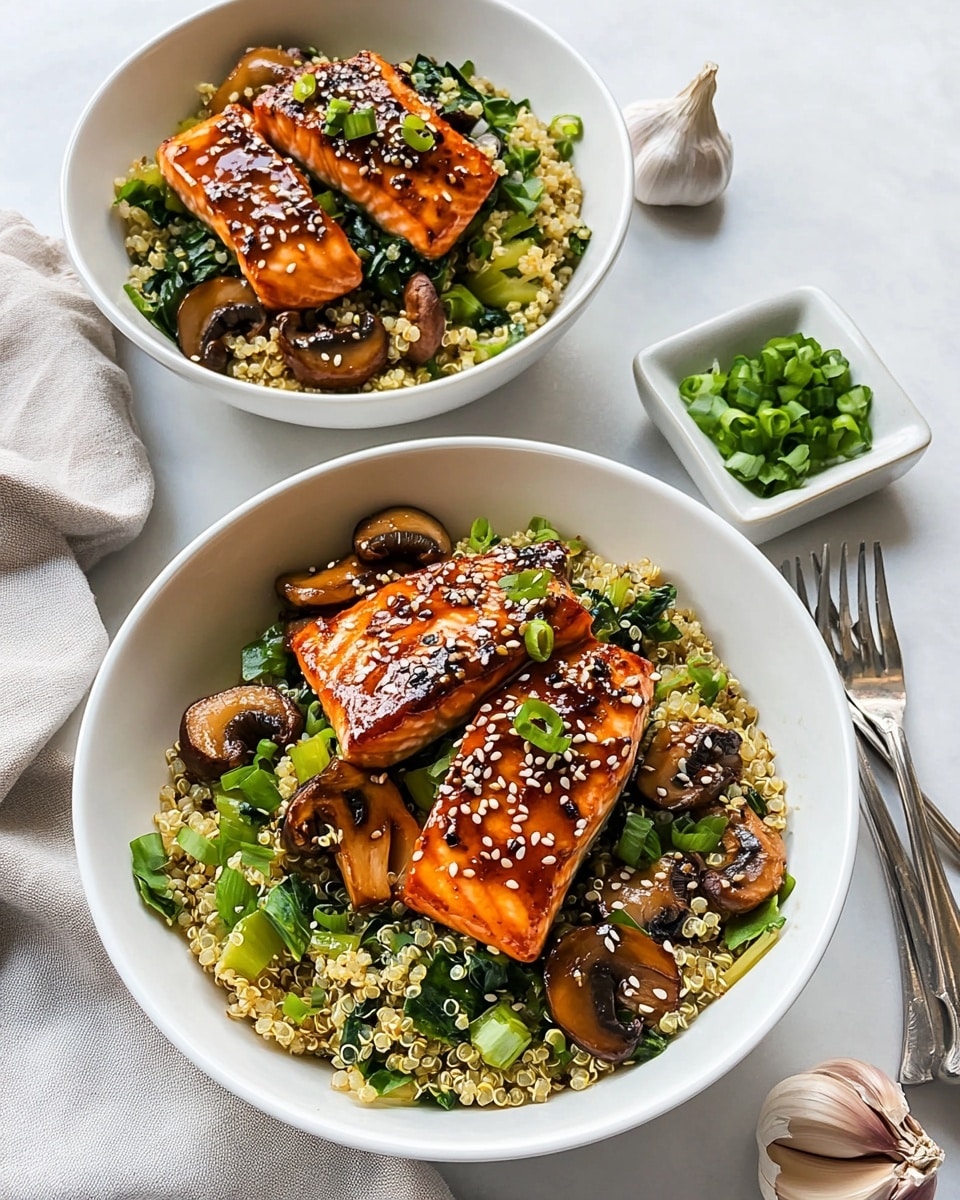
Garnishes
I always finish these bowls with a scattering of toasted sesame seeds and a handful of thinly sliced green onions—they add crunch and a burst of fresh flavor. Sometimes, I’ll also toss on a few sprigs of cilantro or a squeeze of lime for an extra pop that brightens the whole dish.
Side Dishes
This recipe is a meal on its own, but if you want sides, light miso soup or a simple seaweed salad pairs perfectly without overpowering the delicate flavors. I sometimes add a small bowl of edamame for extra protein and to keep the meal feeling like you’re dining out at a sushi spot.
Creative Ways to Present
For special occasions, I like serving this Teriyaki Salmon Bowl with Veggies and Avocado Recipe in individual glass jars or bento boxes with compartments to keep everything neat and visually stunning. Adding colorful vegetable ribbons made with a peeler makes it look extra fancy and invites everyone to dive right in.
Make Ahead and Storage
Storing Leftovers
Leftover bowls keep really well in airtight containers and last 2-3 days in the fridge. I recommend storing salmon separate from the avocado if you don’t plan to eat it right away—avocado can turn brown if left exposed, but a quick lemon juice squeeze can help keep it fresh a bit longer.
Freezing
I typically don’t freeze the whole bowl because avocado doesn’t freeze well and the texture of steamed veggies changes. However, you can freeze marinated but uncooked salmon fillets and thaw them when you’re ready to bake fresh for your bowls.
Reheating
To reheat leftovers, I gently warm the salmon and veggies in the oven or microwave, ensuring they don’t dry out. Adding a splash of water and covering loosely with foil helps keep moisture in. Add fresh avocado slices only after reheating for the best texture and flavor.
FAQs
-
Can I use frozen salmon for the Teriyaki Salmon Bowl with Veggies and Avocado Recipe?
Absolutely! Just make sure to thaw it completely in the refrigerator before marinating and cooking. Using thawed salmon helps ensure even cooking and better absorption of the teriyaki flavors.
-
Is there an easy homemade teriyaki sauce I can use?
Yes! A simple mix of soy sauce, brown sugar, garlic, ginger, and a splash of rice vinegar or mirin makes a delicious teriyaki sauce. Simmer it until slightly thickened, and you have a fresh sauce that tastes amazing on salmon and veggies.
-
Can I make this recipe dairy-free and gluten-free?
Definitely. Use gluten-free tamari or soy sauce in your teriyaki sauce and ensure your other ingredients like rice and veggies are free from cross-contamination. This recipe is naturally dairy-free, so it’s a great fit for many dietary needs.
-
What can I substitute for avocado if I don’t like it?
If avocado isn’t your thing, cucumbers or edamame offer a nice fresh contrast and creaminess without the heaviness. You could also add a dollop of Greek yogurt or a sprinkle of toasted nuts for texture.
Final Thoughts
This Teriyaki Salmon Bowl with Veggies and Avocado Recipe really holds a special place in my kitchen rotation because it’s a delicious, balanced meal that never feels boring. I love how customizable it is and how it comes together so quickly without sacrificing taste or nutrition. Give it a try—you’ll enjoy how easy it is to impress yourself (and your family) with something tasty, wholesome, and just a little bit special.
Print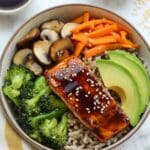
Teriyaki Salmon Bowl with Veggies and Avocado Recipe
- Prep Time: 10 minutes
- Cook Time: 20 minutes
- Total Time: 30 minutes
- Yield: 4 servings
- Category: Main Course
- Method: Baking
- Cuisine: Asian
- Diet: Gluten Free
Description
A nutritious and flavorful Teriyaki Salmon Bowl featuring oven-baked marinated salmon, steamed fresh vegetables, and served over brown jasmine rice or quinoa. This balanced meal combines tender salmon with vibrant veggies and a savory teriyaki sauce drizzle, perfect for a wholesome lunch or dinner.
Ingredients
Salmon and Marinade
- 4, 6 oz salmon filets (Atlantic or sockeye)
- 1 cup teriyaki sauce
Grains
- 2 cups cooked brown jasmine rice, wild rice, or quinoa
Vegetables and Others
- 1 teaspoon olive or avocado oil
- ¼ cup water
- 1 cup fresh snow peas
- 1 medium head of broccoli or cauliflower, cut into florets
- 1 cup sliced mushrooms
- 1 cup sliced carrots
- 1 avocado, sliced into thin strips
- Red pepper flakes, optional, for topping
Instructions
- Marinate the Salmon: In a large bowl or Ziploc bag, place the 4 salmon filets and pour in 1 cup of teriyaki sauce. Ensure the salmon is fully coated. Marinate for at least 20 minutes and up to 4 hours in the refrigerator to allow the flavors to infuse.
- Preheat and Prepare to Bake: Preheat your oven to 400°F (200°C). Line a cookie sheet or baking dish with parchment paper. Remove salmon from the marinade, placing them skin side down on the prepared baking surface if skin is attached.
- Bake the Salmon: Bake the salmon for 12-15 minutes, depending on thickness and type. Sockeye salmon cooks slightly faster than Atlantic. When almost cooked through, switch the oven to broil and brown the salmon tops for 1-2 minutes carefully to avoid burning. The salmon should be flaky and reach an internal temperature of 145°F (63°C). Remove from oven and set aside.
- Steam the Vegetables: While salmon cooks, heat a large saucepan over medium heat and add 1 teaspoon of olive or avocado oil. Add snow peas, broccoli florets (or cauliflower), sliced mushrooms, and sliced carrots to the pan along with ¼ cup water. Cover and steam the vegetables over medium heat for about 6 minutes until tender yet crisp. Drain any excess water and remove from heat.
- Heat the Rice or Quinoa: Warm the cooked brown jasmine rice, wild rice, or quinoa until heated through, ready for serving.
- Assemble the Bowl: To assemble, place ½ cup of warm rice or quinoa in each bowl. Add a quarter of the steamed vegetables, one 6 oz salmon filet, and a quarter of the sliced avocado to each bowl. Drizzle additional teriyaki sauce on top and sprinkle red pepper flakes for some optional heat.
Notes
- This recipe can be adapted to be gluten-free by selecting a gluten-free teriyaki sauce and ensuring all ingredients are certified gluten-free.
- To keep the dish dairy-free and low lactose, verify that the teriyaki sauce contains no dairy ingredients.
- Use wild-caught salmon if preferred for a more sustainable choice.
- Adjust the amount of red pepper flakes to control the spiciness or omit for a milder flavor.
- Substitute cauliflower for broccoli as preferred or based on availability.
- Cooking times may vary slightly depending on salmon thickness and oven variations—always check for a safe internal temperature of 145°F (63°C).

